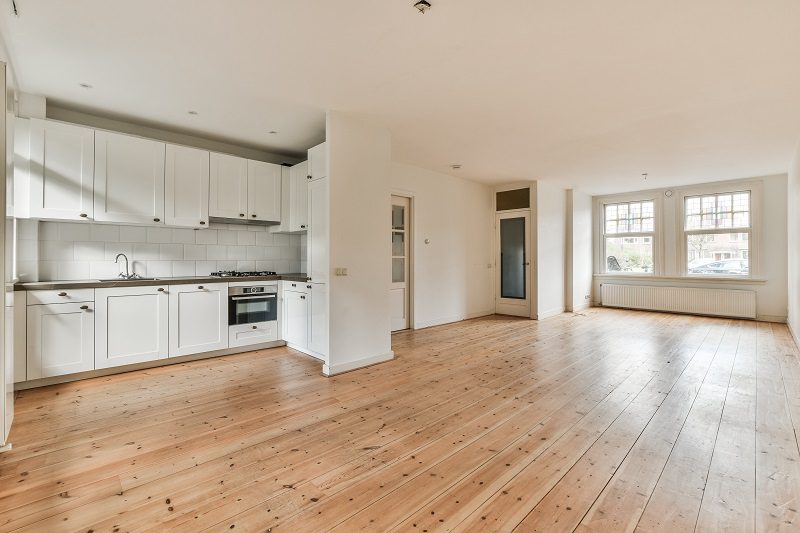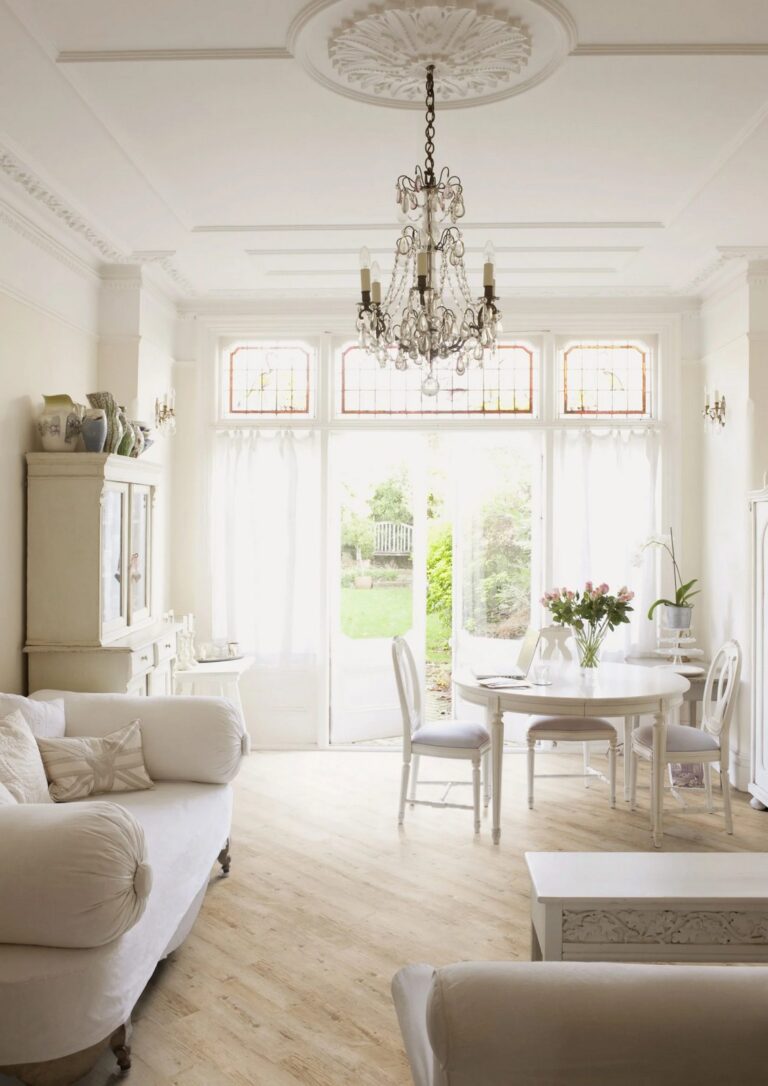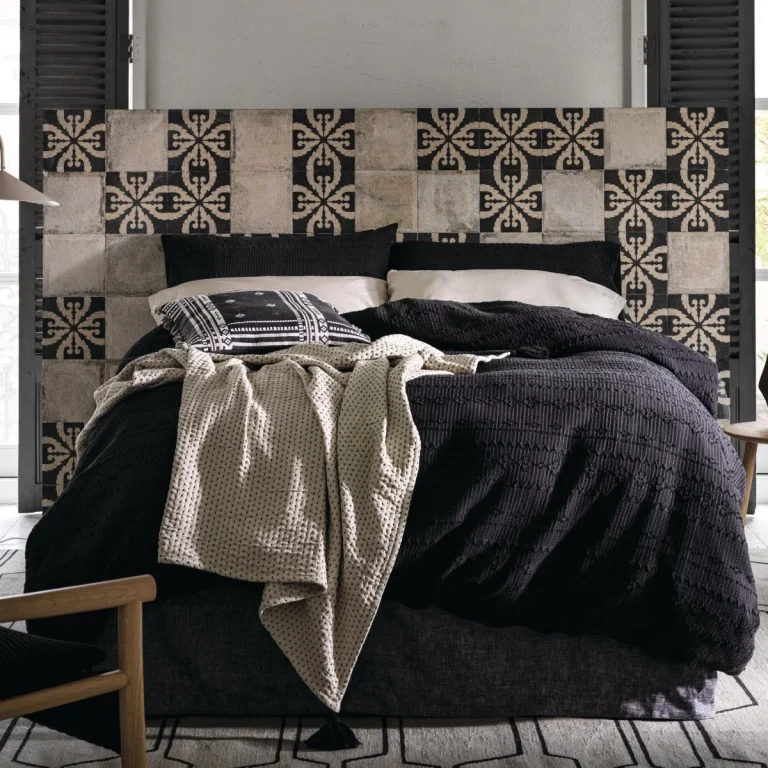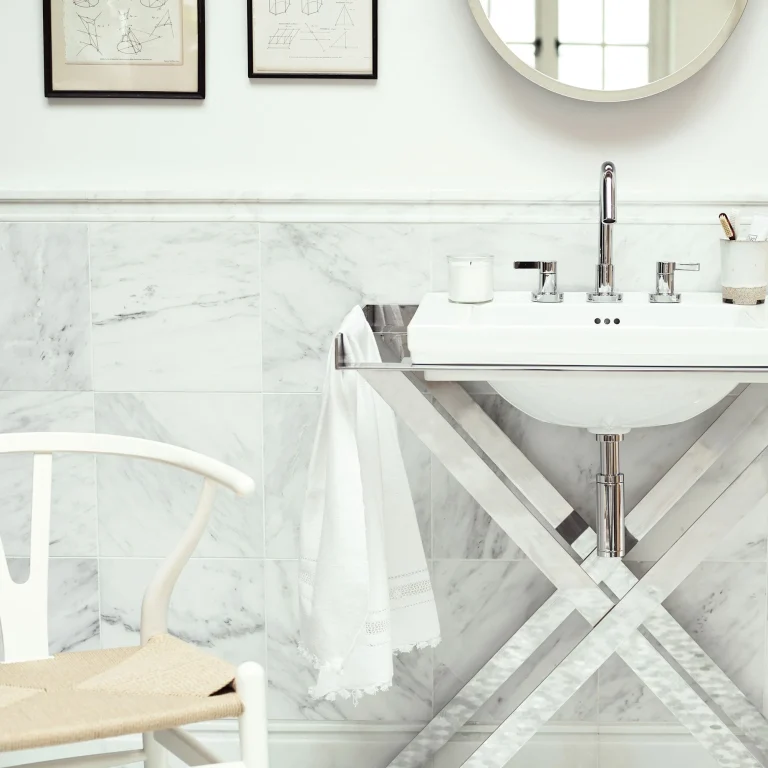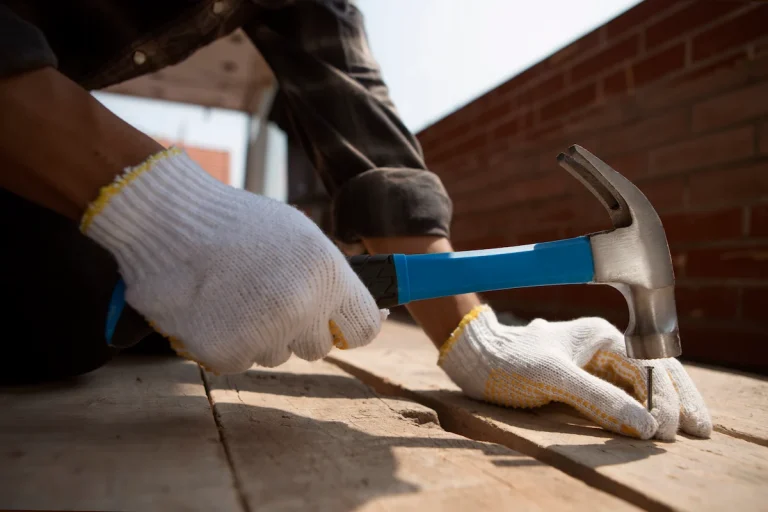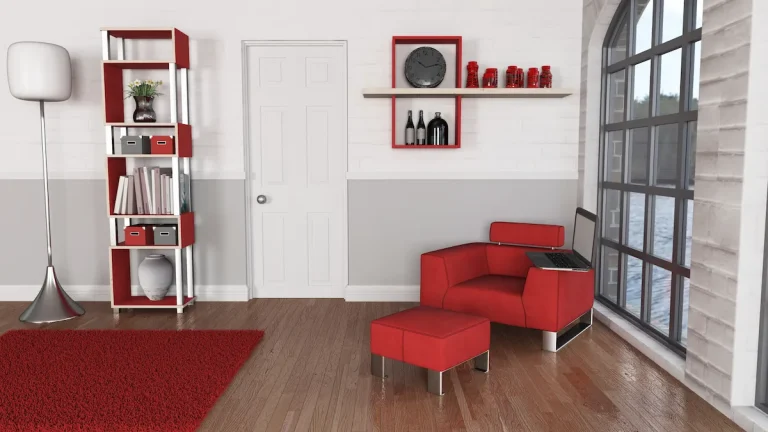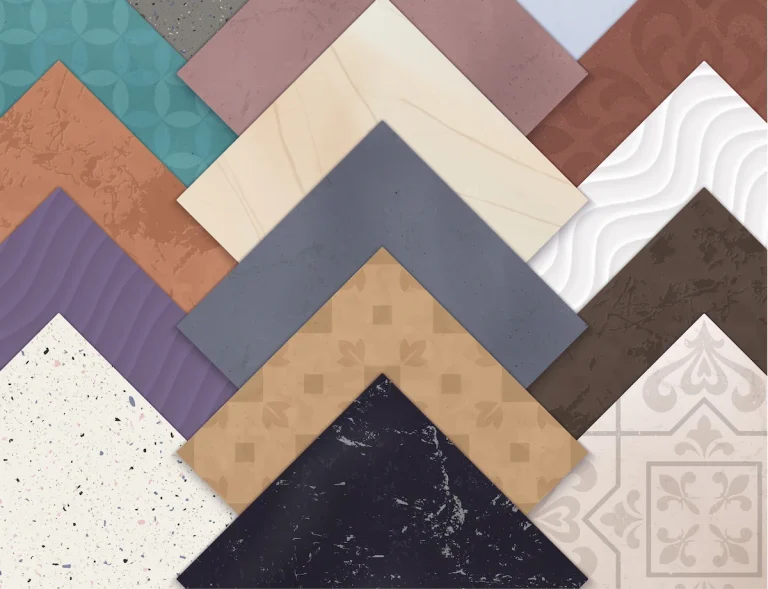Looking to upgrade your flooring but not sure whether to go with LVT or laminate? We will explore the key differences between LVT vs laminate flooring, covering material composition, durability, installation process, water resistance, cost, and more.
Find out which one is better for high-traffic areas, moisture-prone areas, environmentally friendly, easier to maintain, offers more design options, more resistant to damage, more affordable, easier to install, and more suitable for DIY installation.
Stay tuned to make an informed decision for your next flooring project!
What is Luxury Vinyl Tiles Flooring?

See product: Karndean Art Select Parquet Glacier Oak
Luxury Vinyl Tiles or LVT flooring is a high-performance, multi-layered flooring solution designed to emulate the appearance of natural materials such as wood, stone, or ceramic. Manufactured using advanced photographic and embossing techniques, LVT offers highly realistic textures and finishes, delivering both aesthetic appeal and functional resilience. Its construction typically includes a protective wear layer, a printed design layer, and a rigid or flexible backing, making it suitable for a wide range of interior applications.
Engineered for durability and ease of maintenance, LVT is water-resistant, compatible with underfloor heating, and provides excellent resistance to scratches, stains, and daily wear. These properties make it an ideal choice for both residential and commercial environments, particularly in high-traffic areas such as kitchens, bathrooms, and hallways. With a diverse range of design options and installation methods available, LVT flooring offers a practical, long-lasting solution without compromising on style or performance.
The Benefits of LVT Flooring
Luxury Vinyl Tiles (LVT) flooring has gained popularity among homeowners and commercial users alike due to its impressive combination of style and practicality. Below are some of the key benefits that make LVT a smart flooring solution:
- Water-resistant and suitable for kitchens and bathrooms
- Highly durable and resistant to wear and tear
- Easy to clean and maintain
- Realistic appearance of wood, stone, or ceramic
- Comfortable underfoot with good sound insulation
- Compatible with underfloor heating systems
- Scratch and stain resistant
- Simple click or glue-down installation options
- Affordable alternative to hardwood or tile
- Low maintenance without the need for polishing
- Long lifespan when properly installed and cared for
Read also : Top 5 Best LVT Flooring Brands 2025
What Is Laminate Flooring?
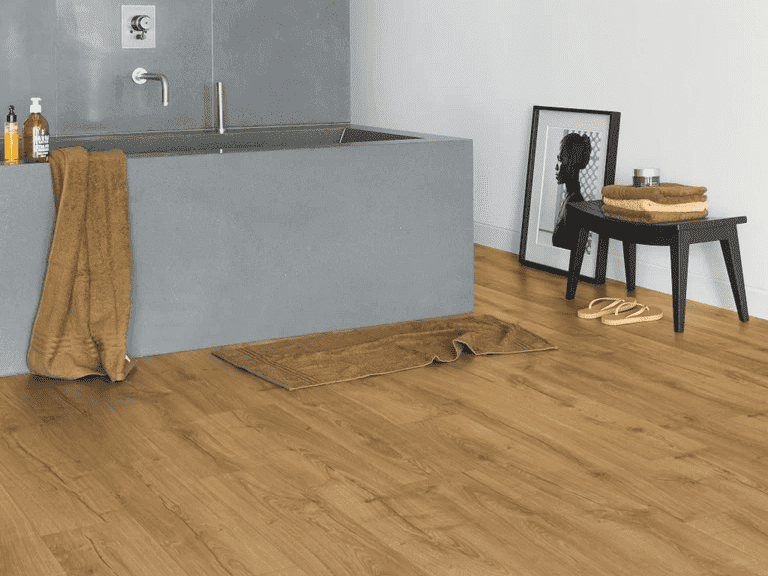
See product: Quick-Step Impressive Classic Oak Natural
Laminate flooring is another popular flooring option that captivates consumers with its ability to mimic the look of natural wood or stone while being more cost-effective. This hard surface flooring solution is suitable for various installation areas. Made from high-density fibreboard (HDF) and layered with a photographic image and protective coating, laminate planks offer a durable and aesthetically pleasing solution for various installation areas.
With its synthetic materials and easy DIY installation methods, laminate flooring has gained traction across residential and commercial applications.
The Benefits of Laminate Flooring
Laminate flooring continues to be a popular choice for both homes and commercial spaces thanks to its combination of affordability, practicality, and attractive design options. Here are the key advantages that make laminate flooring a reliable option:
- Cost-effective compared to hardwood or stone
- Scratch and impact resistant surface
- Easy to clean and maintain
- Simple and quick installation process
- Suitable for high-traffic areas
- Hypoallergenic with minimal dust and allergens
- UV resistance to minimise fading
- Can mimic the look of wood or tile realistically
- Compatible with underfloor heating systems
- Durable layered construction for longevity
- Environmentally friendly options available
Read also : Understanding the Various Types of Laminate Flooring
The Differences Between LVT vs Laminate
Comparing LVT (Luxury Vinyl Tile) and laminate flooring is essential for anyone planning a home renovation or upgrade. While both are often seen as cost-effective alternatives to real wood flooring, they differ significantly in terms of durability, appearance, and maintenance. Below are the key aspects to consider when choosing between LVT and laminate flooring.
1. Appearance and Texture
Both LVT (Luxury Vinyl Tiles) and laminate flooring are designed to replicate natural materials like wood or stone. However, LVT tends to offer more realistic textures and patterns due to advanced photographic and embossing technologies. Laminate also looks convincing, but under close inspection, the plastic top layer can sometimes appear less natural. LVT is often favoured in spaces where authenticity in appearance is a priority.
2. Water Resistance
One of the major differences between LVT and laminate lies in their resistance to moisture. LVT is highly water-resistant and in many cases fully waterproof, making it suitable for kitchens, bathrooms, and basements. Laminate, while durable, has a core made of HDF (High Density Fibreboard) which can swell if exposed to water over time. This makes LVT the safer choice for damp-prone environments.
3. Durability and Maintenance
LVT flooring is made from layers of flexible vinyl that make it incredibly durable and scratch resistant. Laminate is also tough, but it can be more susceptible to damage from standing water or heavy impacts. In terms of maintenance, both are relatively easy to clean, but LVT requires less caution when it comes to spills. Over time, LVT may retain its condition slightly better under heavy usage.
4. Installation Process
Laminate flooring is typically installed using a click-lock system, which is fast and convenient. LVT can be installed with similar click mechanisms or glued down, depending on the product type and room condition. The glue-down method offers greater stability, especially for commercial use. However, it may require professional installation compared to laminate’s more DIY-friendly format.
5. Comfort and Sound
Laminate floors tend to feel harder underfoot and can produce a hollow sound when walked on without proper underlay. LVT is generally quieter and softer thanks to its flexible composition and optional acoustic backing. For homes where comfort and noise reduction are important, LVT often provides a more pleasant experience. That said, modern laminate with quality underlay can also offer good comfort levels.
| Feature | LVT (Luxury Vinyl Tiles) | Laminate Flooring |
|---|---|---|
| Appearance & Texture | Exceptional realism with textured wear layers. | Good visual appeal, though patterns can appear flatter |
| Water Resistance | Fully waterproof and ideal for kitchens, bathrooms | Only water-resistant; core may swell if exposed to moisture |
| Durability & Maintenance | Highly scratch-resistant and low-maintenance | Durable underfloor, but susceptible to water damage |
| Comfort & Sound | Softer and quieter underfoot, can include acoustic backing | Harder feel; proper underlay needed for sound damping |
| Installation | Options: click, glue-down, loose-lay – suitable for DIY or pros | Click-lock floating floor – easy to install |
Which More Affordable, LVT or Laminate Flooring?
When it comes to affordability, laminate flooring generally has the upper hand over LVT. Laminate is typically less expensive to purchase and install, making it a popular choice for budget-conscious homeowners. However, it’s important to consider long-term value as well. While LVT may come with a higher upfront cost, its durability and water resistance can lead to fewer repairs and replacements over time. Therefore, the more affordable option depends on whether you’re prioritising initial savings or long-term investment.
LVT vs Laminate Flooring, Which One Is Better?
When deciding between LVT vs laminate flooring, it ultimately comes down to your specific needs and preferences. LVT is known for its superior water resistance, making it ideal for areas like kitchens and bathrooms. On the other hand, laminate often offers a more authentic wood-like appearance at a lower cost. In terms of durability, both are fairly robust, but LVT tends to handle moisture and heavy traffic slightly better. Overall, LVT might be the better option for households seeking practicality, while laminate suits those prioritising aesthetics on a budget.
For those seeking the optimal balance of quality and budget, exploring TEKA Flooring’s offerings in both Laminate and LVT Flooring could unveil the perfect solution. If you ask, “is LVT better than laminate”? Well, the answer lies in your needs and room planning preferences.
You have the freedom to make the decision that suits you best. However, if you’re still uncertain and would like professional advice, you can schedule a consultation to compare laminate and LVT options here!
Read also:


























